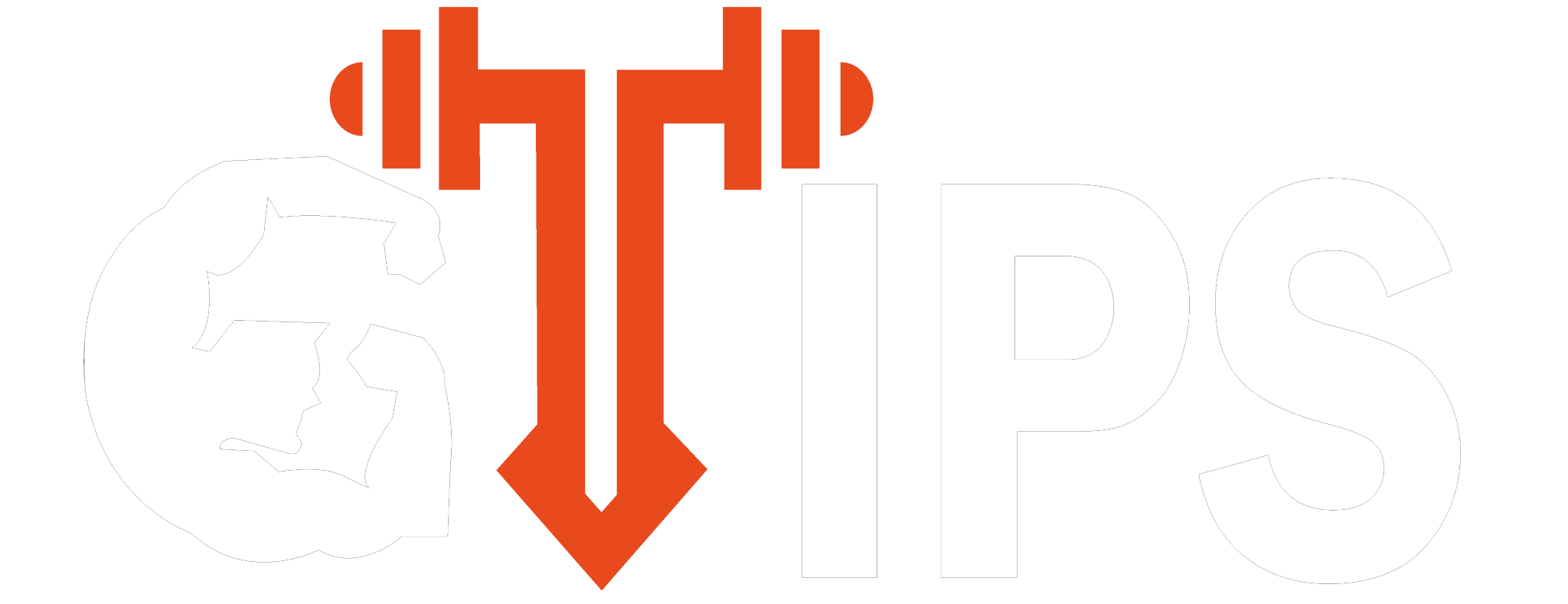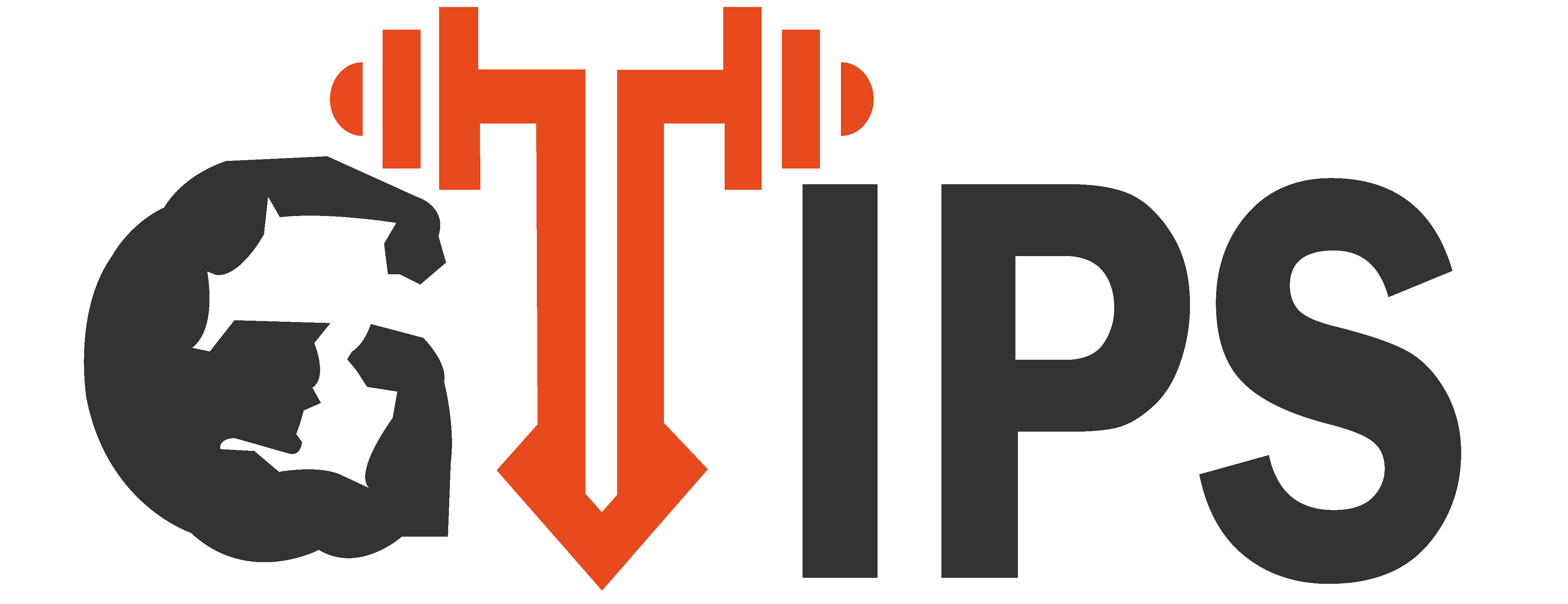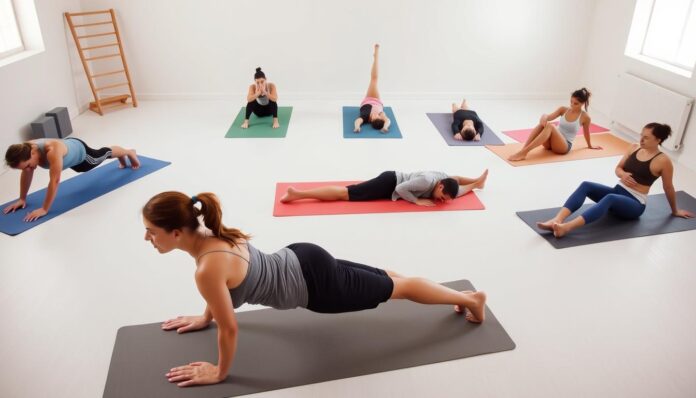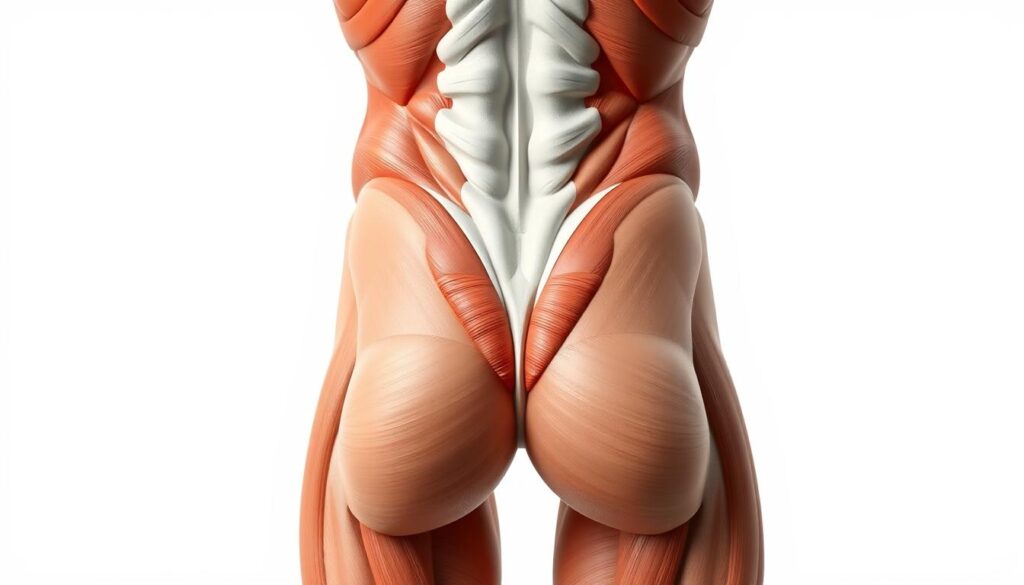Imagine waking up one morning, and instead of struggling to get out of bed, you effortlessly rise, feeling balanced and strong. This newfound vitality comes from a strong core built through beginner exercises. Starting with beginner core workouts can change your daily life, making it easier and safer.
Just like a building needs a solid base, your body needs a strong core. This core engages many muscles, boosting your stability and strength. It’s the first step to a healthier, more active life.
Key Takeaways
- Core exercises for beginners are essential for overall fitness.
- Beginner core workouts lay the groundwork for strength and stability.
- Foundational core movements help in injury prevention.
- A strong core improves your performance in daily activities.
- Engaging multiple muscle groups is key to effective core workouts.
Understanding the Importance of Core Strength
Core strength is key to your physical health. It affects many parts of your life. A strong core helps you stay balanced and keeps your posture right.
This makes simple tasks at home or sports easier. A strong core is the base for your body’s stability.
The Role of Core Strength in Daily Life
Good core health means you can move better and avoid injuries. It helps with lifting, twisting, and bending. A strong core also means better posture, which can reduce back pain and improve how you move.
Benefits of a Strong Core
Strengthening your core has many advantages:
- Enhanced balance and stability
- Better posture, leading to less strain on your back
- Increased athletic performance
- Improved functional fitness, making daily tasks easier
Working on your core strength can greatly improve your daily activities.
Anatomy of the Core Muscles
The core is made up of many muscles that help with stability and movement. Knowing about core muscle anatomy helps you pick the right exercises. This leads to better performance and less chance of injury. Key muscle groups are vital for keeping good posture and supporting movement.
Key Muscle Groups Involved
The main muscles include the rectus abdominis, transverse abdominis, obliques, erector spinae, and pelvic floor muscles. Each group adds to your overall strength in its own way.
| Muscle Group | Location | Main Function |
|---|---|---|
| Rectus Abdominis | Front of the abdomen | Flexes the spine and stabilizes pelvis |
| Transverse Abdominis | Deep layer of abdominal muscles | Supports internal organs and stabilizes spine |
| Obliques | Sides of the abdomen | Twists and bends the trunk |
| Erector Spinae | Along the spine | Extends the back and helps maintain posture |
| Pelvic Floor Muscles | Base of the pelvis | Supports pelvic organs and aids in stability |
How These Muscles Function Together
These muscles work together to keep the trunk and pelvis stable. Their strength and coordination are key in core exercises. A strong core helps you move better, making daily tasks easier and more efficient.
Core Exercises for Beginners
Starting your journey to stronger core muscles is exciting. It’s all about finding the right exercises for you. Begin with beginner core exercises that teach you the basics. Bridges and crunches are great for beginners. They work on key muscles and help you get to know your body better.
Overview of Effective Core Exercises
Here are some top beginner core exercises:
- Bridges
- Crunches
- Planks
- Dead Bugs
These exercises help you build strength step by step. They make sure you learn the basics before moving on to harder ones.
Safety Considerations for Newbies
It’s important to stay safe while doing these exercises. Here are some tips for safe workouts:
- Start with slow, controlled movements.
- Maintain proper alignment to avoid strain.
- Listen to your body; stop if you feel pain.
- Consider working with a trainer initially to ensure correct form.
Learning good habits early will help you do more advanced exercises later.
Basic Core Movements to Start With
Building a strong core starts with basic movements. These exercises help build stability and strength in key muscle groups. Bridges and crunches are great for beginners. They target specific muscles and prepare you for more challenging exercises.
Bridges: Engaging Your Glutes
Bridges are excellent for working your glutes and lower back. Start by lying on your back with knees bent and feet flat. Lift your hips up towards the ceiling, making a straight line from shoulders to knees. This targets your posterior chain muscles.
Crunches: A Classic Core Strengthening Move
Crunches are a classic for strengthening your abs. Lie on your back with knees bent and feet flat, hands behind your head. Lift your upper body off the ground, keeping your lower back pressed down. This effectively works your core muscles.
| Exercise | Primary Muscles Targeted | Benefits |
|---|---|---|
| Bridges | Glutes, Lower Back, Core | Improves stability, Strengthens posterior chain |
| Crunches | Abdominals | Enhances core strength, Aids in muscle definition |
Simple Core Routines for Immediate Action
Starting simple core routines is key for beginners looking to boost their core strength. A good core workout structure can greatly impact your fitness journey. Begin by adding exercises like bridges and crunches to your routine. These engage the main muscle groups in your core.
Structuring Your First Core Workout
Your first core workout should be balanced. Begin with 5 to 10 minutes of warm-up exercises. Then, do 20 to 30 minutes of core-focused movements. Here’s a suggested structure:
- Bridges: 3 sets of 10-15 repetitions
- Crunches: 3 sets of 10-15 repetitions
- Planks: Hold for 20-30 seconds, 3 times
This plan helps you tackle different core areas. It also keeps your workouts interesting and varied.
Duration and Frequency Recommendations
Beginners should aim for 2-3 workouts a week for best results. Gradually increase the workout’s intensity and length as you get stronger. Start with shorter sessions, focusing on form first. Then, move to longer workouts and more exercises.
Intermediate Core Exercises: Level Up Your Strength
Once you’re comfortable with basic movements, it’s time to try intermediate core exercises. These workouts push your core to new limits and build strength. Planks and the bird dog exercise are great examples. They work your abs and improve stability and coordination.
Planks: The Go-To Full-Body Stabilizer
Planks are perfect for working your entire core. They also strengthen your shoulders and back. It’s important to keep the right form.
Start by lying face down and lift your body with your forearms and toes. Your body should be straight from head to heels. Begin with a 30-second hold and increase as you get stronger.
Bird Dog: Building Coordination and Balance
The bird dog exercise is great for strengthening your core and improving balance. Start on all fours, with your hands under your shoulders and knees under your hips. Lift one arm and the opposite leg, keeping your body balanced.
Hold for a few seconds, then switch sides. This exercise is key for improving core stability and body coordination.
Variations to Keep Your Routine Fresh
To keep your workouts exciting and productive, try different exercise variations. These changes suit various skill levels and let you adjust workouts to fit your needs. Beginners can start with simpler exercises, while more experienced folks can try harder versions.
Modifying Exercises for Different Skill Levels
Changing up core exercises helps you keep improving. Here are some tips to modify movements:
- Beginners can start with easier versions of classic exercises, like knee push-ups instead of regular push-ups.
- Intermediate levels can try side planks or elevated leg raises for more challenge.
- For the advanced, adding flutter kicks or medicine ball slams can test your core strength and stability.
Incorporating Equipment for Added Challenge
Using special equipment can make your workouts even better. Here are some ideas:
- Stability balls can help improve balance during planks or crunches.
- Resistance bands add extra tension, making your core work harder.
- Adding weights to exercises increases resistance, helping you build more strength.
How to Practice Proper Form and Technique
To get the most out of your core workout, learning proper form is key. Making sure you avoid common mistakes can boost your results and keep you safe from injuries. Skipping form can make your workouts less effective and prevent you from fully working your core muscles. Understanding these key points will make your training better.
Common Mistakes to Avoid
Many people make mistakes in their core exercises that slow their progress. Here are some common errors to watch out for:
- Rounding your back during planks or crunches, which makes them less effective.
- Locking out your joints during resistance training, which can cause strain.
- Swinging weights instead of moving them smoothly, which reduces core engagement.
Tips for Engaging the Core Effectively
Building a strong connection between your mind and muscles is essential for proper form. Here are some tips to help you engage your core muscles effectively:
- Use mirrors or record yourself to check your form and alignment during exercises.
- Focus on precision over quantity; make sure each movement is done right.
- Move slowly to keep control and effectively engage your core muscles.
- Always engage your core before starting each exercise to improve stability and support.
For beginners, starting with simpler exercises is a good idea. You can find basic routines that build strength and promote proper form at this guide. A structured approach will help you improve consistently and enjoy your fitness journey more.
Integrating Core Work into Your Overall Fitness Plan
Adding core exercises to your fitness plan boosts your performance and health. It’s key to mix core workouts with cardio and strength training. This mix strengthens your body, improves stability, and enhances posture for everyday tasks.
Balancing Core Exercises with Other Workouts
A good fitness plan doesn’t just focus on one area. It should balance workouts across different muscle groups. This way, you build overall strength. Make sure your routine includes:
- Core exercises for stability
- Strength training for muscle building
- Cardiovascular workouts for endurance
This balance helps you see lasting results and avoids injuries. It keeps your fitness journey exciting and varied.
Creating a Comprehensive Fitness Routine
Your fitness plan should mix activities that target different fitness areas. Here’s how to create a balanced routine:
- Set clear fitness goals.
- Plan core workout days alongside cardio and strength days.
- Keep your exercises varied to stay motivated.
With thoughtful planning, you can integrate core exercises effectively. This boosts strength and endurance all over your body.
Tracking Your Progress: Signs of Core Strength Improvement
It’s key to check how strong your core is to stay motivated and reach your fitness goals. Watching your progress helps you see how far you’ve come. Knowing how to track your fitness lets you find areas to improve and push yourself harder.
Measuring Core Strength Gains
One good way to track your core strength is by looking at how you do in different exercises. Notice how long and hard you can keep going. Signs you’re getting better include:
- Being able to hold planks longer
- Staying steady during bird dogs and bridges
- Doing more reps of core exercises without losing form
These signs are important for seeing how well you’re doing in your fitness journey. Keep a journal or use an app to track these changes. It helps you see how far you’ve come.
Adjusting Your Routine Based on Progress
When you check your core strength, it’s time to make your workouts harder. If you’re getting better, try tougher exercises or more intense workouts. Think about:
- Using weights or resistance bands to add challenge
- Trying new versions of exercises to work different muscles
- Keeping holds longer to build endurance
Changing up your workouts keeps you excited and helps you grow stronger. Remember, it’s not just about the numbers. It’s about making your workouts better to meet and beat your new goals.
Conclusion
Building core strength is key to any fitness journey. Doing essential core exercises for beginners boosts your fitness and improves stability and posture. By learning these basic movements, you lay a solid foundation for your health.
Regular practice of core exercises enhances your performance in daily activities and workouts. You’ll see better strength and balance, leading to a more active life. There are many bodyweight exercises you can do at home without special equipment. For more tips on intense bodyweight workouts, visit this page.
Getting stronger in your core is more than just looking good. It’s essential for almost every physical movement. By pushing yourself with new routines and staying disciplined, you’re on the path to reaching your fitness goals.
FAQ
What are the best core exercises for beginners?
For beginners, start with simple exercises like bridges, crunches, and planks. These exercises work many muscles and help with stability.
How often should I perform beginner core workouts?
Aim to do core exercises 2-3 times a week. Begin with short sessions and increase the challenge as you get stronger.
Why is core strength important for everyday activities?
A strong core improves balance, posture, and stability. It helps with daily tasks like lifting and sitting correctly. It also lowers the risk of back pain and injuries.
What safety considerations should I keep in mind when doing core exercises?
Always focus on proper form to avoid injuries. Beginners should avoid arching their back in planks and crunches. It’s best to start with a personal trainer or a structured program.
What are some easy core exercises for absolute beginners?
Beginners can start with bridges, crunches, and basic planks. These exercises target the core and can be adjusted for your skill level.
How can I track my progress in core strength?
Keep track of your progress by noting how long you can do exercises and how intense they are. Change your routines to keep improving.
Can I incorporate equipment into my core workouts?
Yes, adding small weights or resistance bands can make your workouts harder. Try these tools as you get better at your exercises.
What are some common mistakes to avoid while doing core exercises?
Avoid mistakes like bad alignment, not engaging your core, and rushing. Keep your posture right and engage your core in each exercise.






